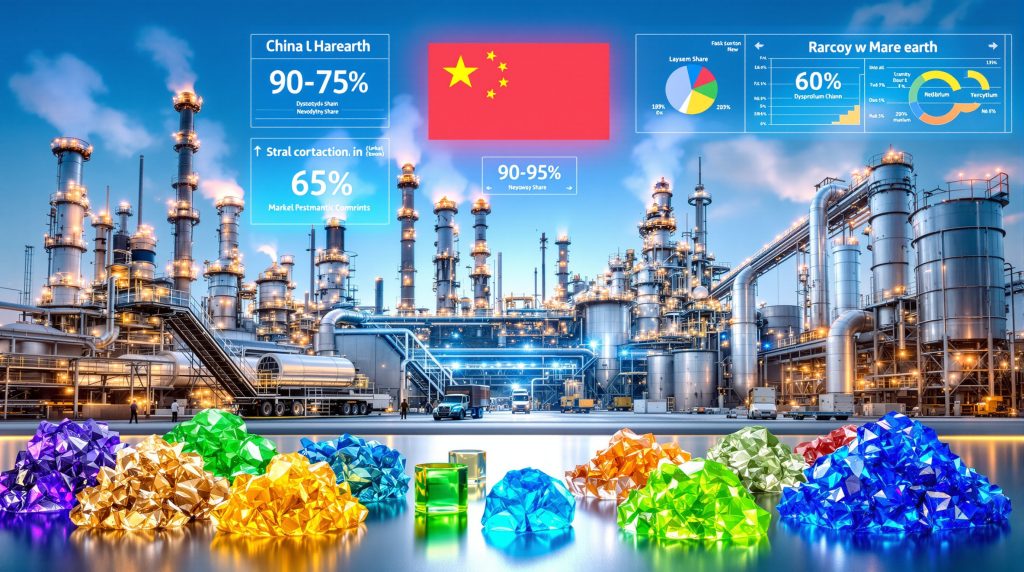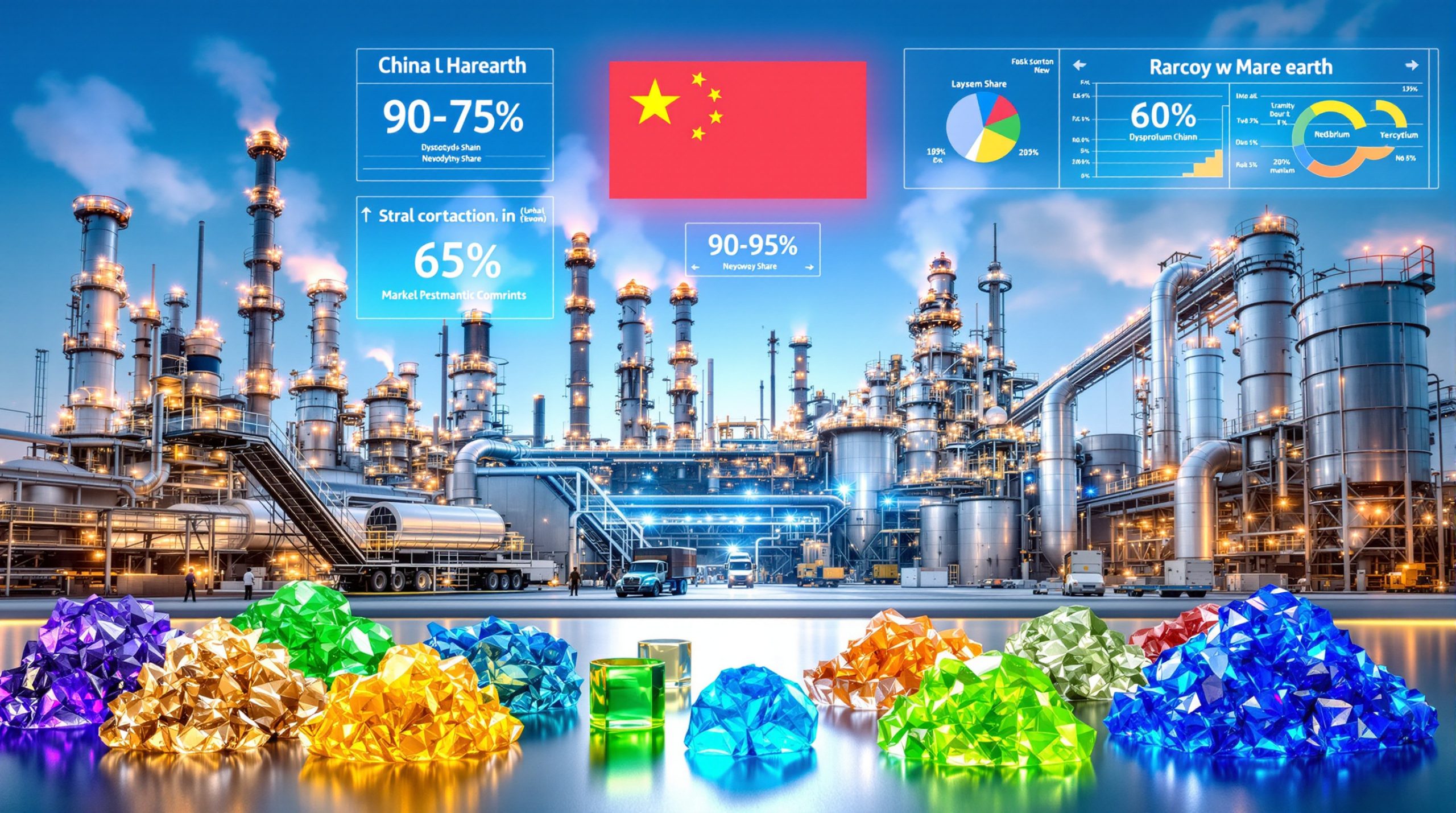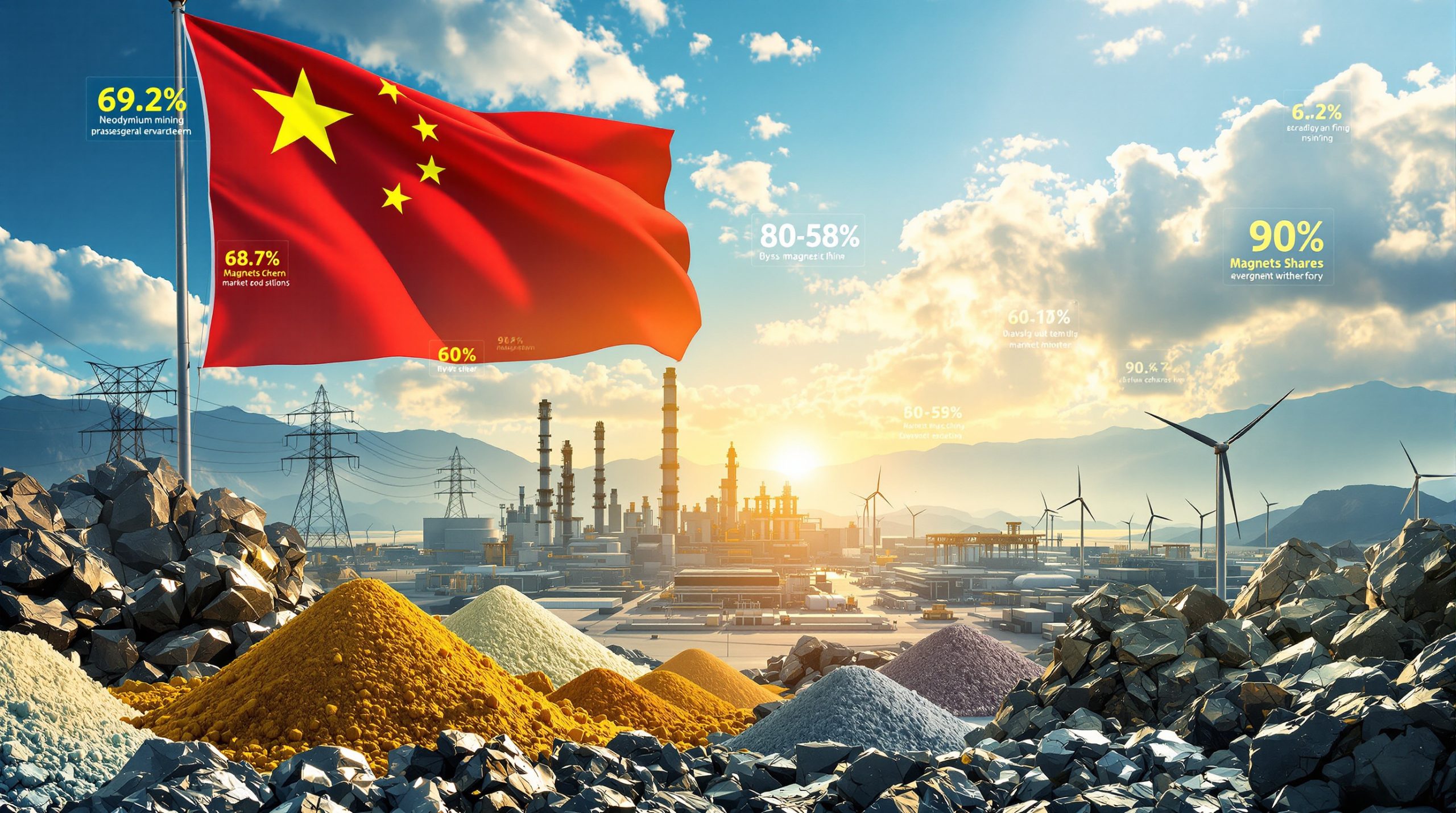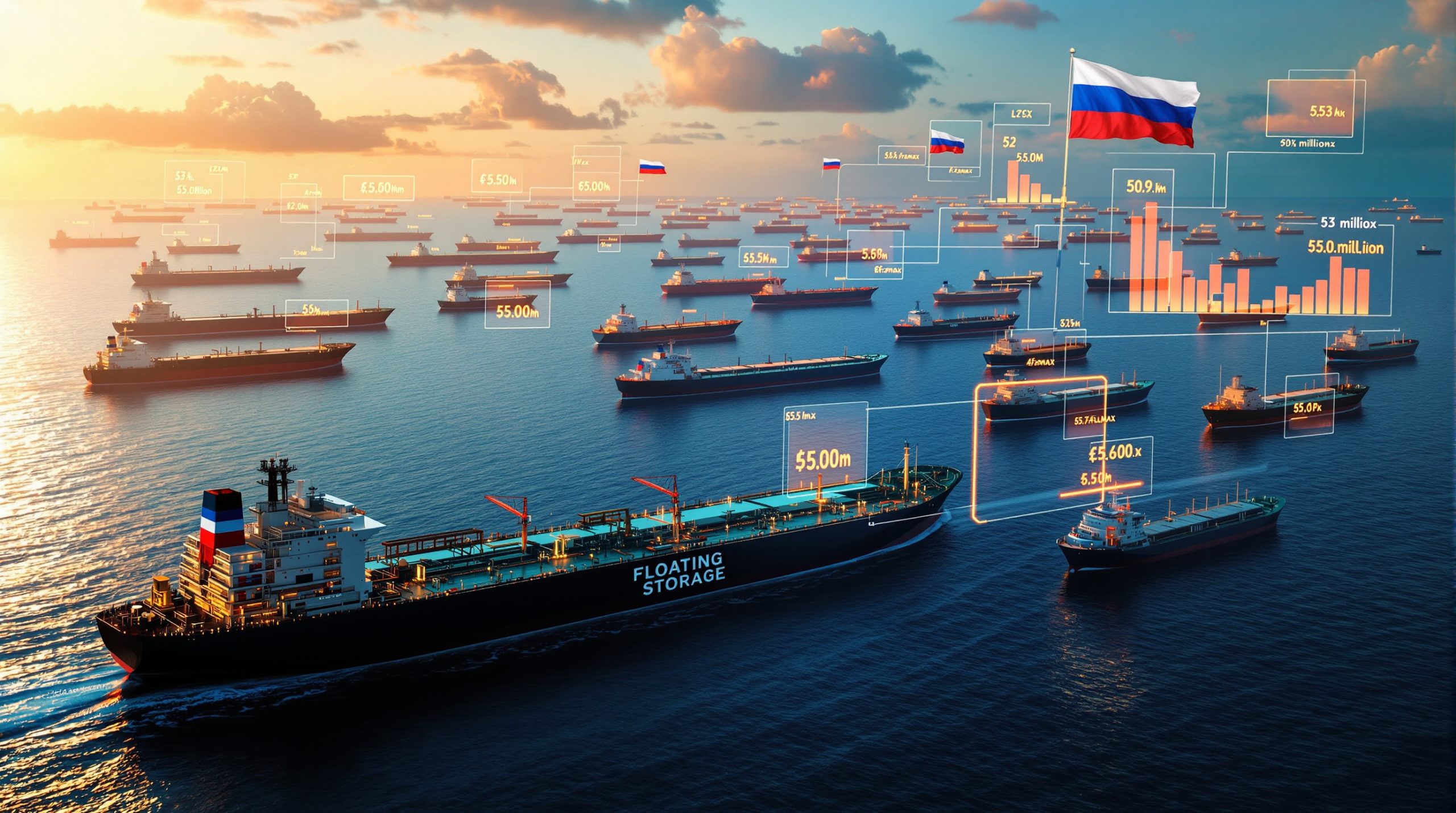Understanding China's Strategic Position in Rare Earth Markets
Chinese midstream dominance in rare earth markets represents one of the most concentrated industrial control structures in modern global commerce. While China maintains approximately 60% of worldwide rare earth mining operations, the nation's true strategic leverage emerges through its overwhelming control of processing infrastructure, where raw mineral concentrates transform into commercially viable compounds and metals.
This processing concentration creates what industry analysts describe as a structural chokepoint that extends far beyond simple mining statistics. The transformation of rare earth ores into usable materials requires sophisticated separation technologies, specialised metallurgical knowledge, and significant capital infrastructure that China has systematically developed over three decades.
The Geographic Reality of Processing Control
China's processing dominance varies significantly across the rare earth spectrum, with some elements showing near-monopolistic control levels. Light rare earth elements like cerium and lanthanum see Chinese processing facilities handling approximately 85-90% of global separation operations, while heavy rare earth elements demonstrate even higher concentration levels.
The most critical bottleneck occurs in neodymium-praseodymium (NdPr) processing, where Chinese facilities control an estimated 95% of global separation capacity. These elements form the foundation of high-performance permanent magnets essential for electric vehicle motors, wind turbines, and defence applications.
Furthermore, understanding this concentration requires examining the broader context of rare earth reserves analysis to appreciate how geographic distribution of raw materials differs from processing capabilities.
What Makes Midstream Processing So Critical?
The Technology Gap That Creates Market Power
Rare earth processing demands sophisticated chemical separation techniques that require decades of operational experience to optimise. Solvent extraction processes must isolate individual elements from complex mineral concentrates containing up to seventeen different rare earth elements mixed with thorium, uranium, and other radioactive materials.
The technical requirements for competitive processing include:
• Advanced metallurgical expertise developed through years of operational experience
• Significant capital investment in specialised chemical separation facilities
• Environmental management systems capable of handling toxic and radioactive byproducts
• Proprietary knowledge of element-specific separation chemistry and process optimisation
• Integration with downstream manufacturing capabilities for quality control verification
Beyond Mining: Where Real Value Creation Occurs
The transformation from raw ore to usable materials involves multiple processing stages, each adding substantial value and technical complexity. In addition, modern mining technology plays an increasingly important role in optimising these processes:
| Processing Stage | China's Market Share | Key Technical Requirements |
|---|---|---|
| Initial Separation | ~90% | Acid digestion, precipitation chemistry |
| Rare Earth Compounds | ~85% | Solvent extraction, purification processes |
| Metal Production | ~95% | Electrolytic reduction, vacuum melting |
| Magnet Manufacturing | ~90% | Powder metallurgy, magnetic field alignment |
The progression from concentrate to finished product requires increasingly sophisticated facilities and technical expertise. Raw rare earth concentrates might trade for $2-5 per kilogram, while high-purity separated oxides command $20-100 per kilogram depending on the element and specification requirements.
How Did China Build This Midstream Empire?
Strategic Industrial Policy Since the 1990s
China's rare earth processing dominance resulted from coordinated industrial policy rather than natural resource advantages alone. The systematic development began in the early 1990s when Chinese leadership identified rare earths as a strategic sector requiring state-directed development.
Moreover, China's approach to supply concentration risks demonstrates how strategic planning can create dominant market positions.
Key policy mechanisms included:
• Technology Transfer Requirements: Foreign companies seeking Chinese market access faced mandatory technology sharing agreements
• Subsidised Infrastructure Development: State-backed investment in separation facilities and specialised research institutes
• Environmental Cost Externalisation: Initially lower regulatory standards reduced processing costs relative to Western competitors
• Integrated Supply Chain Planning: Coordinated development from mining operations through finished magnet production
• Export Quota Systems: Controlled raw material exports to encourage domestic processing investment
The Expertise Accumulation Effect
Three decades of concentrated processing activity created self-reinforcing competitive advantages that prove difficult for other nations to replicate quickly:
Human Capital Development: China developed the world's largest population of rare earth metallurgists, chemical engineers, and process operators with specialised knowledge of separation chemistry.
Research Institution Networks: Universities and government research centres focused specifically on rare earth processing improvements, separation efficiency gains, and environmental remediation techniques.
Equipment Manufacturing Ecosystem: Specialised suppliers emerged to support rare earth processing operations, reducing capital costs and improving technical support availability.
Supply Chain Integration: Coordinated development created seamless connections between mining operations, separation facilities, metal production, and downstream manufacturing.
Why Western Alternatives Have Struggled to Emerge
Technical Barriers Beyond Capital Investment
Establishing competitive rare earth processing capabilities requires substantially more than financial resources and political will. The technical challenges create barriers that extend development timelines and increase uncertainty for potential investors.
Process Optimisation Knowledge: Efficient rare earth separation requires years of operational experience to achieve competitive recovery rates and product purity specifications. Initial operations typically achieve 60-70% of theoretical efficiency, improving gradually through operational learning.
Environmental Compliance Complexity: Western environmental regulations add significant complexity and cost to rare earth processing operations. Radioactive waste management, acid neutralisation, and water treatment systems can represent 30-40% of total facility costs.
Skilled Workforce Limitations: Limited availability of experienced rare earth metallurgists and process engineers constrains development speed and increases operational risk during facility startup phases.
Quality Specification Achievement: Meeting stringent purity requirements for high-technology applications demands proven processes and quality control systems that develop over multiple years of operation.
Economic Challenges in Market Entry
New processing facilities outside China encounter several economic headwinds:
Higher Operating Costs: Labour costs in developed economies typically run 3-5 times higher than comparable Chinese operations, while environmental compliance adds additional expense layers.
Market Access Challenges: Establishing customer relationships requires extensive product qualification processes that can extend 2-3 years for critical applications.
Financing Complexity: Banks and investors often struggle to evaluate technical risks associated with rare earth processing, leading to higher capital costs and more restrictive lending terms.
Scale Economics Disadvantage: Chinese facilities benefit from economies of scale developed over decades, while new Western operations must achieve competitive efficiency from smaller initial capacities.
Furthermore, China's rare earth dominance in global supply chains creates additional barriers for new market entrants.
Current Scope of Chinese Midstream Control
Processing Capacity by Element Category
Chinese midstream dominance in rare earth markets varies significantly across different rare earth elements, with some categories showing near-complete control while others maintain slightly more geographic diversity.
Light Rare Earth Elements (LREEs):
• Lanthanum processing: ~85% global capacity concentrated in Inner Mongolia and Sichuan facilities
• Cerium separation: ~90% global capacity with primary operations in Baotou and Ganzhou regions
• Neodymium production: ~95% global capacity dominated by integrated mining-processing operations
Heavy Rare Earth Elements (HREEs):
• Dysprosium processing: ~98% global capacity primarily from Southern China ion adsorption clay deposits
• Terbium separation: ~99% global capacity with minimal alternative sources outside China
• Yttrium production: ~95% global capacity concentrated in specialised heavy rare earth facilities
Regional Processing Infrastructure
China's rare earth processing infrastructure concentrates in several key regions, each specialising in different aspects of the value chain:
Inner Mongolia (Baotou Region): Handles approximately 60% of global light rare earth processing, primarily from Bayan Obo mine concentrates. Facilities include Baotou Steel Rare Earth, China Northern Rare Earth, and multiple smaller processors.
Jiangxi Province: Dominates heavy rare earth processing with approximately 70% of global capacity for elements like dysprosium and terbium. Operations focus on ion adsorption clay processing using in-situ leaching techniques.
Shandong Province: Hosts integrated processing facilities combining separation, metal production, and magnet manufacturing. Companies like Shenghe Resources maintain vertically integrated operations from ore processing through finished products.
Strategic Implications of Processing Concentration
Export Control Leverage
Chinese midstream dominance in rare earth markets provides significant geopolitical leverage through export control mechanisms that extend beyond traditional trade policy tools. Recent regulatory expansions demonstrate how midstream control translates into strategic power projection.
The implementation of expanded rare earth export restrictions in 2025 established several precedent-setting mechanisms:
• Automatic Military Application Rejection: Export licences for any military or dual-use applications face automatic denial without appeal processes
• Enhanced Civilian Screening: Non-military applications undergo expanded technical review processes that can extend 6-12 months
• Strategic Partner Prioritisation: Preferred allocation systems favour countries and companies with established cooperative relationships
• Pricing Power Through Supply Constraint: Controlled export volumes create artificial scarcity that supports premium pricing strategies
Technology Transfer Requirements
Foreign companies seeking access to processed rare earth materials increasingly encounter sophisticated technology transfer requirements that extend beyond traditional joint venture arrangements.
Recent requirements include:
Intellectual Property Disclosure Mandates: Companies must provide detailed technical specifications for intended applications, including proprietary manufacturing processes and performance characteristics.
Localisation Requirements: Critical applications may require establishment of Chinese manufacturing facilities or partnership arrangements with domestic companies.
Research Collaboration Obligations: Access to advanced materials may require participation in joint research programs or technology sharing agreements.
Supply Chain Integration: Long-term supply agreements often include requirements for deeper integration with Chinese supply chain partners and technology providers.
How Other Nations Are Responding
Western Supply Chain Diversification Efforts
Recognition of Chinese midstream dominance has triggered substantial policy responses across developed economies, though implementation timelines and success probabilities vary significantly across different initiatives.
United States Initiatives:
The Defense Production Act allocated $2.8 billion specifically for rare earth processing infrastructure development, representing the largest peacetime investment in critical mineral processing capacity since World War II.
• MP Materials plans a $700 million separation facility in Texas, targeting initial production by 2027 with capacity for 10,000 tons annually of separated rare earth oxides
• Government purchase agreements provide demand guarantees for domestic processing operations, reducing market risk for private investors
• Department of Energy loan guarantee programs offer financing support for processing infrastructure development
Australian Strategic Responses:
Australia's approach focuses on leveraging existing mining operations and geographic proximity to Asian markets while building processing capabilities through its strategic mineral reserve initiatives.
• Lynas Corporation expanded Malaysian separation capacity by 50% with government co-investment support, reaching 22,500 tons annual capacity
• Critical Minerals Facility provides $2 billion in financing support for downstream processing development
• Strategic partnership agreements with allied nations create coordinated demand for Australian-processed materials
European Union Coordination:
The EU's Critical Raw Materials Act represents a €6.2 billion commitment to reducing import dependencies and building internal processing capacity. Consequently, the development of the European CRM facility represents a significant step towards supply chain diversification.
• Multiple member states plan rare earth processing facilities with coordinated technical specifications and shared research programs
• Research consortium initiatives focus on breakthrough separation technologies and recycling infrastructure development
• Regulatory harmonisation efforts aim to streamline environmental permitting for strategic mineral processing operations
Alternative Technology Development
Beyond geographic diversification, several technology development pathways offer potential routes to reduced Chinese processing dependence:
Advanced Separation Technologies: Research into continuous extraction processes, membrane-based separation, and bio-hydrometallurgical techniques could reduce capital requirements and environmental impacts for new processing facilities.
Urban Mining and Recycling: Development of efficient rare earth recycling from permanent magnets, electronic devices, and industrial waste streams could supplement primary processing requirements.
Material Substitution Research: Advanced materials research focuses on reducing rare earth requirements through improved magnet designs, alternative permanent magnet materials, and application-specific optimisation.
Investment Implications for Market Participants
Risk Assessment Framework
Investors evaluating rare earth market exposure require sophisticated risk assessment frameworks that account for geopolitical, technical, and market dynamics unique to this sector. For instance, understanding the broader implications of critical minerals transition is essential for long-term investment planning.
| Risk Factor | Impact Level | Probability | Mitigation Strategies |
|---|---|---|---|
| Chinese Export Controls | Critical | High | Diversified supplier relationships, inventory management |
| Processing Bottlenecks | Critical | Very High | Vertical integration investments, alternative sourcing |
| Geopolitical Tensions | High | Moderate | Geographic diversification, hedging strategies |
| Technology Access Restrictions | Moderate | Rising | Joint venture partnerships, technology development |
| Environmental Compliance | High | Certain | Advanced treatment technologies, regulatory expertise |
Sector-Specific Investment Themes
The concentrated nature of chinese midstream dominance in rare earth markets creates several distinct investment opportunities and risks that require specialised knowledge and analysis approaches.
Processing Infrastructure Development: Investment opportunities exist in alternative processing capacity development, though investors must carefully evaluate technical risks, development timelines, and market access challenges.
Separation Technology Innovation: Companies developing breakthrough separation technologies, recycling processes, or automation solutions may offer exposure to potential disruption of existing processing advantages.
Regional Processing Hubs: Geographic diversification trends create opportunities for regionally-focused processing facilities serving specific market segments or applications.
Vertical Integration Strategies: Companies pursuing integration from mining through processing may reduce supply chain risks while capturing additional value-added margins.
Market Psychology and Timing Considerations
Rare earth markets exhibit unique psychological dynamics driven by the combination of supply concentration, geopolitical tensions, and limited investor familiarity with technical fundamentals.
Supply Shock Premium: Markets tend to overreact to geopolitical tensions or export restriction announcements, creating volatility that may not reflect actual supply-demand fundamentals.
Technology Transition Uncertainty: Investment timing challenges arise from uncertainty about breakthrough technologies, recycling scale-up, and alternative material development timelines.
Policy Support Duration: Government support programs drive much current investment activity, but investors must evaluate sustainability of political support through economic cycles and administration changes.
Future Outlook: Will Chinese Dominance Persist?
Structural Factors Supporting Continued Leadership
Several fundamental factors suggest chinese midstream dominance in rare earth markets will remain significant despite international diversification efforts and policy interventions.
Scale Economics and Integration: Existing Chinese facilities benefit from operational scale that new competitors will require years to achieve. Integration with downstream manufacturing provides stable demand and quality feedback loops that enhance competitive positioning.
Continuous Capacity Investment: Chinese companies continue expanding processing capacity and improving separation efficiency. Annual investment in rare earth processing infrastructure exceeds $2 billion, maintaining technological leadership and cost advantages.
Domestic Market Advantages: China's massive domestic demand for rare earth materials provides stable revenue bases for processing operations, reducing dependence on export markets and providing flexibility during international trade disputes.
Technical Expertise Accumulation: The concentration of rare earth processing expertise in Chinese institutions and companies creates knowledge advantages that competitors must overcome through substantial investment in human capital development.
Potential Disruption Scenarios
Despite structural advantages, several factors could alter the competitive landscape and reduce Chinese processing dominance over time.
Breakthrough Separation Technologies: Revolutionary processing methods that significantly reduce capital requirements, environmental impacts, or operational complexity could level competitive playing fields and enable rapid capacity development outside China.
Recycling Infrastructure Scale-Up: Successful development of large-scale rare earth recycling from permanent magnets and electronic waste could reduce primary processing demand and create alternative supply sources.
Alternative Material Breakthroughs: Development of high-performance materials that substitute for rare earth elements in critical applications could fundamentally alter demand patterns and reduce strategic importance of processing control.
Coordinated International Investment: Sustained, coordinated government support for alternative processing capacity development could overcome individual country limitations and create viable competitive alternatives.
Timeline Expectations and Investment Horizons
Realistic assessment of diversification progress suggests investor expectations should align with multi-decade timelines rather than rapid transformation scenarios.
Near-term (2025-2030): Limited impact from current diversification efforts. New processing facilities may achieve initial production but will require several years to reach competitive efficiency and scale.
Medium-term (2030-2035): Alternative processing capacity may reach 15-25% of current Chinese levels, providing meaningful but insufficient alternatives for complete supply chain independence.
Long-term (2035-2050): Potential for more significant market structure changes if breakthrough technologies emerge and sustained investment continues, though Chinese advantages in scale and integration will persist.
However, the strategic importance of rare earth processing ensures continued policy attention and investment support. Market participants should prepare for gradual rather than revolutionary change in supply chain geography, as the entrenched advantages supporting chinese midstream dominance in rare earth markets will require sustained, coordinated international efforts to meaningfully address.
Disclaimer: This analysis contains forward-looking statements and projections based on current market conditions and policy trends. Rare earth markets involve significant geopolitical, technical, and commercial risks that may affect actual outcomes. Investors should conduct independent research and consider professional advice before making investment decisions in this sector.
Interested in Capitalising on Rare Earth Market Developments?
Discovery Alert's proprietary Discovery IQ model delivers real-time alerts on significant ASX mineral discoveries, instantly empowering subscribers to identify actionable opportunities in critical minerals and rare earth sectors ahead of the broader market. Understanding how major mineral discoveries can lead to substantial market returns becomes clearer when exploring Discovery Alert's dedicated discoveries page, which showcases historic examples of exceptional outcomes and provides insights into the strategic timing advantages that define successful resource investing.




